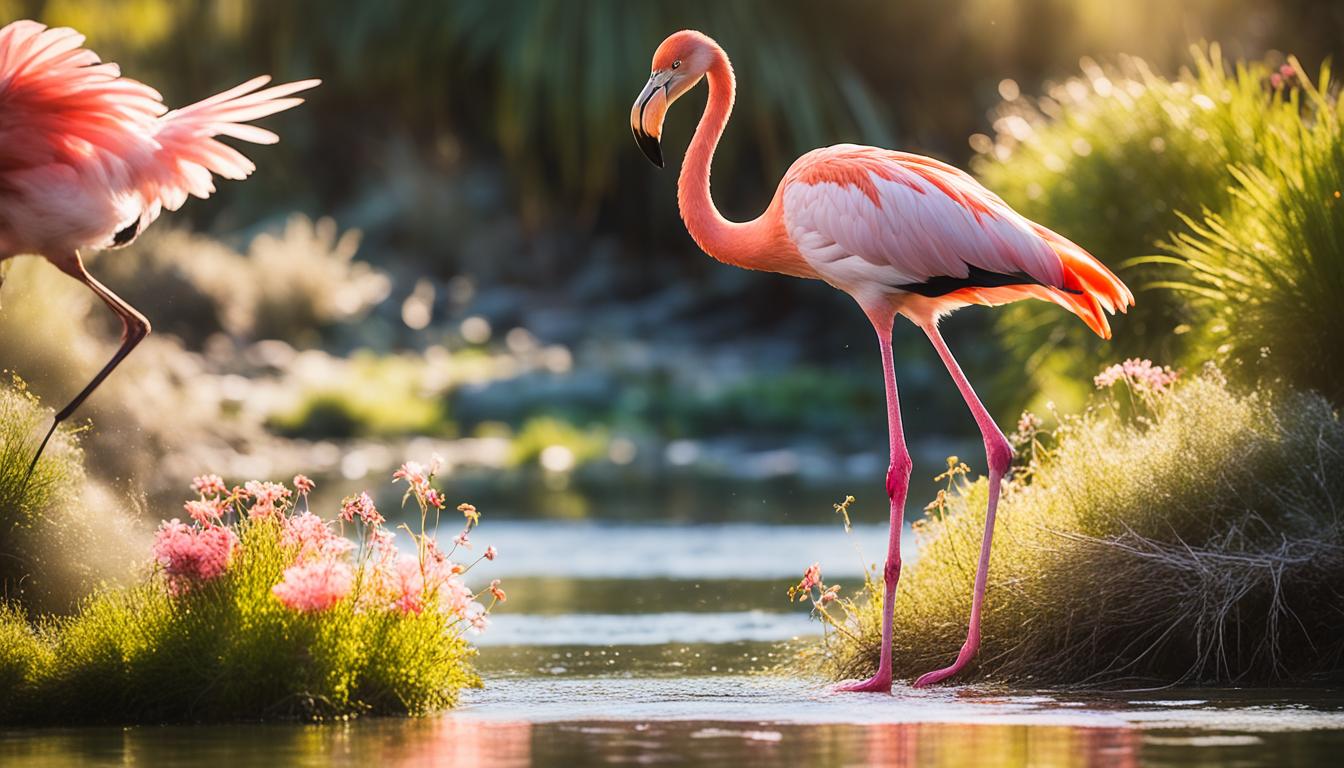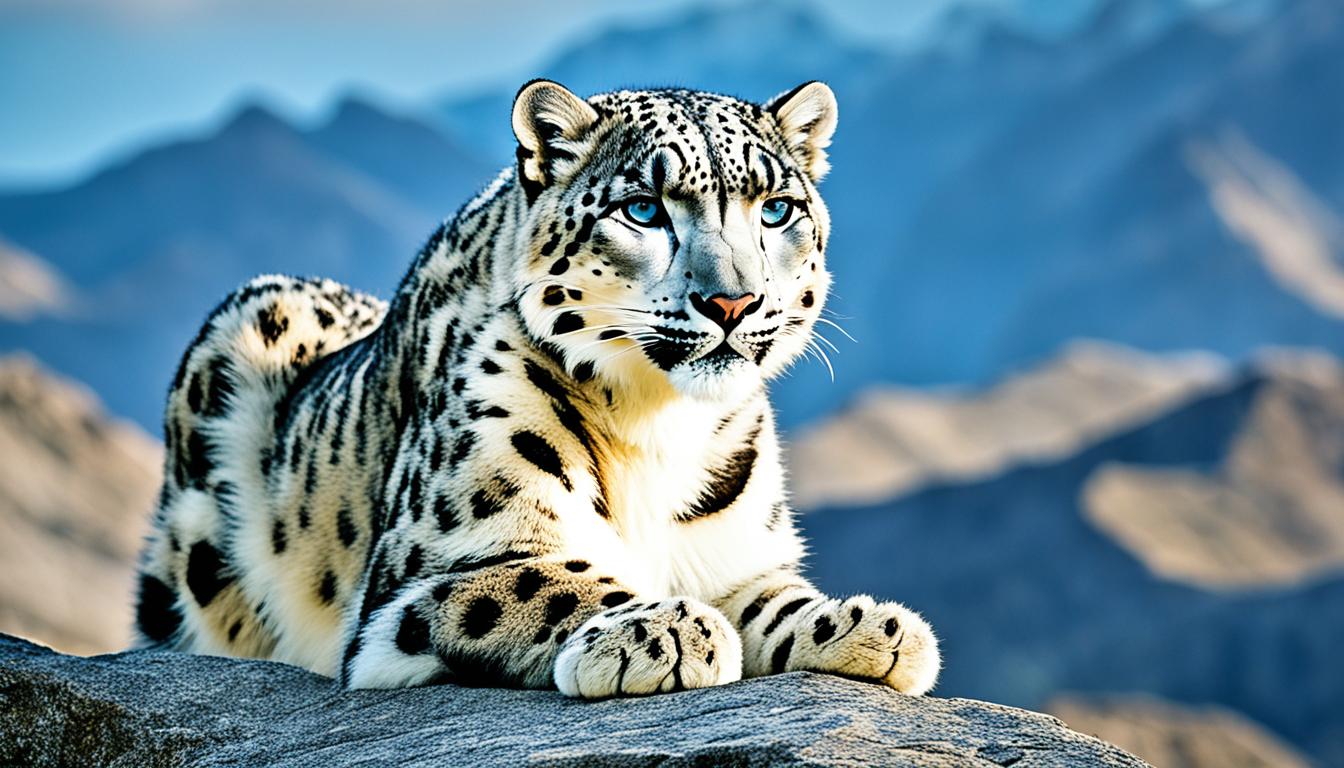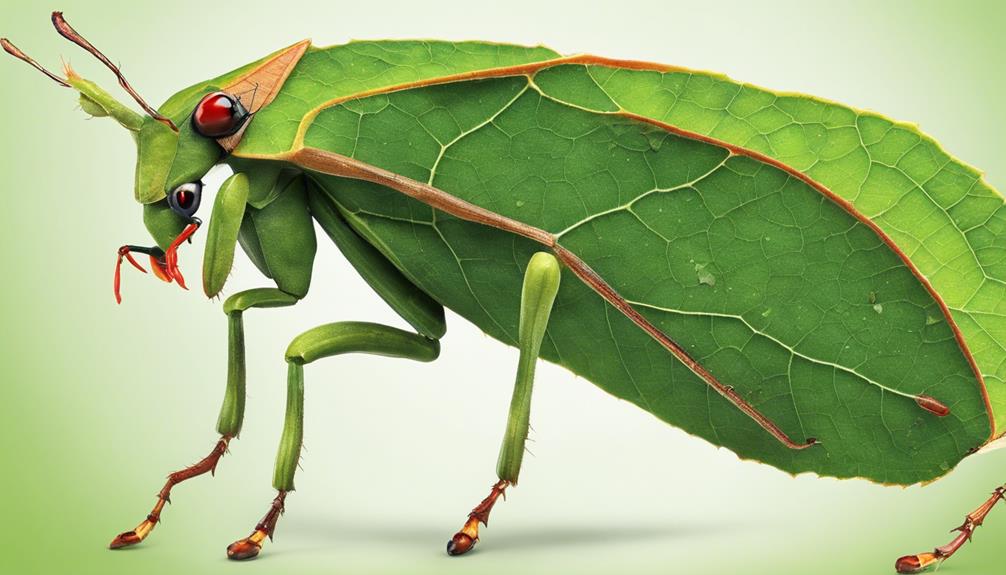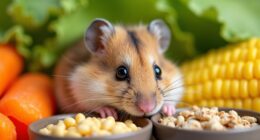Are you aware of the many captivating animals that begin with the letter F? From tiny creatures to majestic giants, these animals highlight the amazing diversity and beauty of the natural world. Prepare to embark on a journey of exploration as we delve into a fascinating lineup of animals starting with F.
Key Takeaways:
- Animals that start with F encompass a wide range of species, from land-dwelling mammals to aquatic creatures.
- Some notable animals that begin with F include ferrets, frogs, flounders, foxes, and fire salamanders.
- These animals captivate with their unique features, behaviors, and habitats, providing endless opportunities for exploration and learning.
- By delving into the world of animals that start with F, we gain a deeper understanding of nature’s wonders and the delicate balance of ecosystems.
- Join us as we uncover the fascinating stories and intriguing facts behind these incredible creatures.
List of Common Animals Beginning With ‘F’
Here is a list of common animals that start with the letter F. These creatures range from the familiar fox to the lesser-known ferret. Let’s explore each of these animals and learn some interesting facts about them.
- Fox: Known for their cunning nature, foxes are small carnivorous mammals found in various habitats such as forests and grasslands. They are known for their bushy tails and distinctive red or gray fur.
- Ferret: Domesticated ferrets are playful and curious creatures that belong to the weasel family. They have long, slender bodies, short legs, and are known for their mischievous nature.
- Frog: Frogs are amphibians known for their ability to transition between land and water. They have smooth, slimy skin, long hind legs built for jumping, and use their unique vocalizations to communicate with other frogs.
- Flounder: Found in coastal waters, flounders are flatfish known for their ability to blend in with the ocean bottom. They have both eyes on one side of their body, allowing them to lie camouflaged on the ocean floor.
- Fire Salamander: Fire salamanders are distinctive amphibians with vibrant black and yellow coloration. They are known for their ability to secrete toxins through their skin as a defense mechanism.
- Flying Fox: Flying foxes, also known as fruit bats, are large bats found in tropical and subtropical regions. They have a wingspan of up to 5 feet and feed primarily on fruit and nectar.
- Flying Fish: Flying fish have specially adapted pectoral fins that allow them to glide above the water’s surface. They can leap out of the water and glide for impressive distances to escape predators.
- Flying Squirrel: Flying squirrels have a membrane called a patagium that stretches between their limbs, enabling them to glide through the air. They are nocturnal creatures typically found in wooded areas.
- Fire Ant: Fire ants are known for their painful bites and aggressive behavior. They are reddish-brown in color and build large colonies with intricate tunnel systems.
Now that we’ve explored some common animals starting with F, let’s dive deeper into the fascinating world of one particular animal – the ferret.
https://www.youtube.com/watch?v=-F_av_vYks8
Ferret: The Mischievous Marvel
The ferret is a small domesticated carnivorous mammal often kept as a pet. Known for their playful and curious nature, ferrets have long, slender bodies, short legs, and a luxurious coat of fur that comes in various colors.
“Ferrets are incredibly intelligent animals, always seeking out new adventures and exploring their surroundings. They are also known for their mischievous behavior, often finding ways to get into places they shouldn’t be!”
Ferrets are native to Europe and have been domesticated for thousands of years. They were originally bred for hunting purposes, specifically for chasing and catching small rodents such as rats and mice. Today, they are mainly kept as companion animals and cherished for their entertaining and affectionate personalities.
Fun fact: Ferrets have a high heart rate of 200-250 beats per minute, which is significantly faster than that of most other small mammals.
Now that we’ve learned about the fascinating ferret, let’s move on to another fascinating creature that starts with the letter F – the frog.
Ferret
Ferrets are fascinating carnivorous animals known for their long, slender bodies and short legs. These agile creatures have been used for centuries to hunt rodents like rats and mice, making them excellent pest control companions.
Ferrets have a high heart rate of 200-250 beats per minute, allowing them to stay active and alert while tracking down their prey. Their sharp teeth and strong jaws make them efficient hunters, ensuring a successful capture each time.
These intelligent animals possess a playful and curious nature, making them popular pets among many animal enthusiasts. Due to their carnivorous diet, it’s important to provide them with a balanced and nutritious meal to ensure their overall well-being.
“Ferrets have been domesticated for thousands of years and have become highly adapted to hunting rodents. Their natural instinct and agility make them exceptional rodent hunters.”
Interesting Facts About Ferrets:
- Ferrets belong to the mustelid family and are closely related to animals like weasels and badgers.
- They are social animals and often live in groups called “businesses” or “fescoes”.
- Despite their carnivorous nature, ferrets are not typically aggressive towards humans if they are well-socialized and trained.
- When excited or happy, ferrets perform a behavior known as the “weasel war dance”, characterized by playful jumps and sideways hopping.
- Ferrets have a distinctive musky odor, which can be reduced with proper hygiene and regular bathing.
To better visualize these adorable creatures, here’s an image of a ferret:

| Common Name | Scientific Name | Average Lifespan | Native Range |
|---|---|---|---|
| Ferret | Mustela putorius furo | 6-10 years | Eurasia |
Frog
Frogs are fascinating amphibians that have the unique ability to live both on land and in fresh water. They are known for their slippery bodies, varied colors, and longer rear legs, which enable them to be skilled swimmers and jumpers. Fun fact: Frogs have a remarkable method of staying hydrated. They can drink water through their skin, absorbing moisture from their surroundings.
Their dual habitat of land and water allows them to thrive in diverse environments, from lush rainforests to arid deserts. Frogs play a crucial role in ecosystems as both predator and prey, contributing to the balance of their habitats.
With over 6,000 known species, frogs are one of the most diverse groups of amphibians. They come in a wide array of sizes, ranging from the tiny Paedophryne amauensis, measuring only 7.7 millimeters long, to the goliath frog, which can grow up to 32 centimeters in length. Each species has its unique adaptations and behaviors that make them intriguing to observe and study.
“Just when the caterpillar thought the world was over, it became a frog.”
Interesting Frog Facts
- Frogs belong to the order Anura, which means “without a tail” in Greek.
- They are ectothermic, relying on external sources to regulate their body temperature.
- Male frogs produce a distinct sound called a “croak” to attract mates.
- Frogs have a specialized respiratory system that allows them to breathe through their skin, in addition to using their lungs.
- They undergo a fascinating transformation from eggs to tadpoles and finally to adults, with some species skipping the tadpole stage entirely.
Frogs are not only a captivating subject of scientific study but also hold cultural and symbolic significance in many societies. Their unique characteristics and behaviors continue to inspire curiosity and awe in people of all ages. Let’s dive into the enchanting world of frogs and discover more about these incredible amphibians.
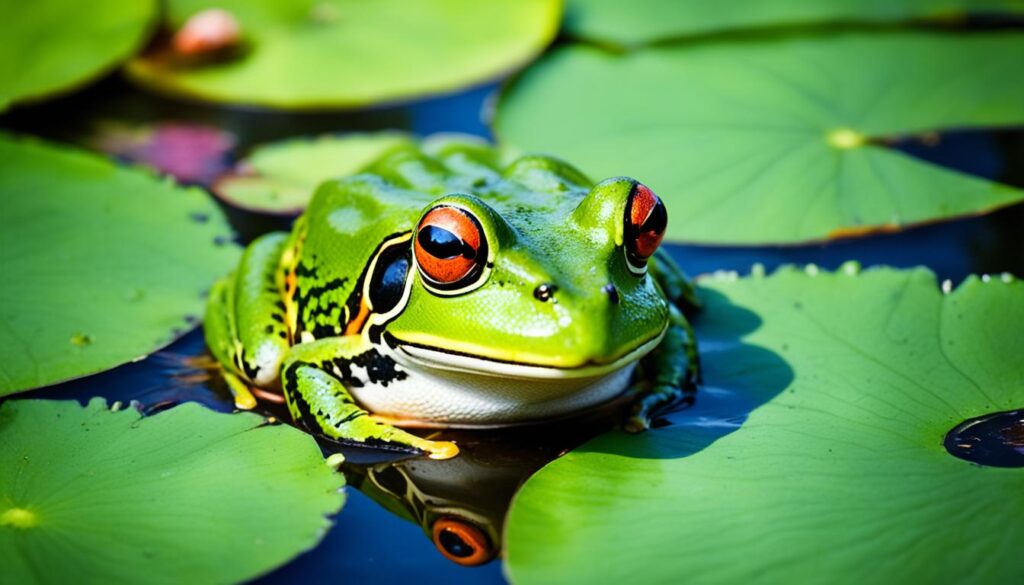
Flounder
Flounders are fascinating fish that can be found at the ocean bottom. They have unique adaptations that help them survive and capture prey in their environment.
Interesting Facts about Flounders:
- Flounders are masters of camouflage. They have the ability to change their color and pattern to blend in with the sand and rocks on the ocean floor, making them almost invisible to their prey.
- One of the most fascinating features of flounders is their remarkable eyes. As flounders grow, their eyes migrate from one side of their head to the other, which allows them to lie flat on the ocean floor and have both eyes facing upward.
- Flounders have a unique hunting technique. They lie motionless on the ocean bottom and wait for their prey, such as small fish and crustaceans, to swim within striking distance. With lightning-fast speed, flounders ambush their prey by quickly lunging forward and engulfing them in their large mouths.
- Flounders have a flat body, which helps them navigate through the sandy ocean bottom with ease. Their bodies are also asymmetrical, with both eyes located on one side of their head. This adaptation allows flounders to lie flat on the ocean floor without casting a shadow, further enhancing their ability to blend in and surprise their prey.
- Flounders are found in oceans all around the world, from shallow coastal waters to the deep sea. They are highly adaptable and can tolerate a wide range of water temperatures and salinity levels.
To better understand the unique characteristics of a flounder, take a look at the image below:
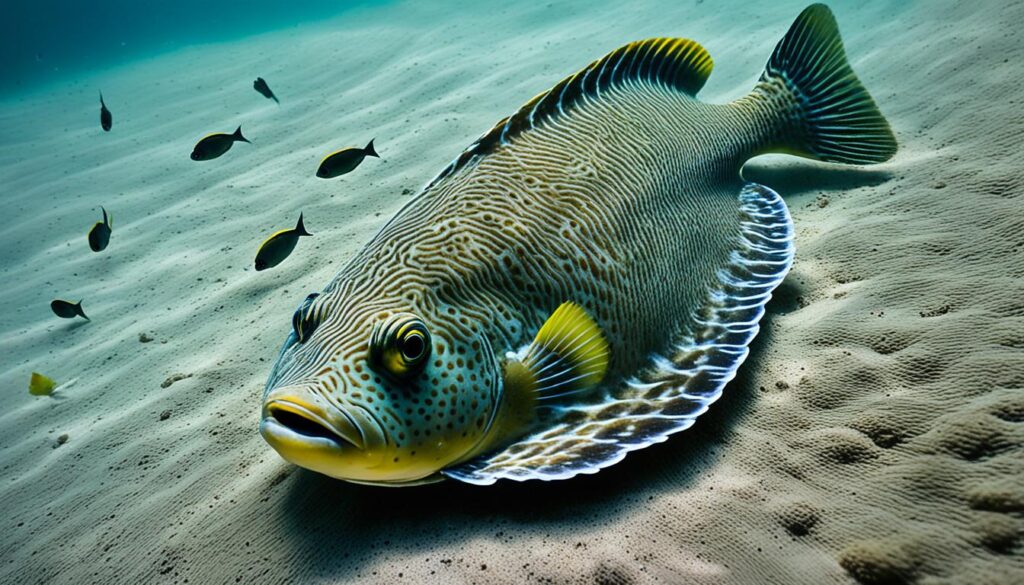
Hunting Technique of Flounders:
“Flounders are true masters of deception. With their ability to change color and pattern, lie flat on the ocean bottom, and strike swiftly, they are highly effective at capturing their prey. Their hunting technique is a testament to their remarkable adaptation to life in the ocean.”
Now that you know some interesting facts about flounders, let’s explore more fascinating animals that start with the letter F!
Fox
Foxes are small carnivorous animals that are closely related to dogs. They are known for their snouts, medium-sized earlobes, and stunning agility. These fascinating creatures can be found in forests on all continents, making them highly adaptable to various environments.
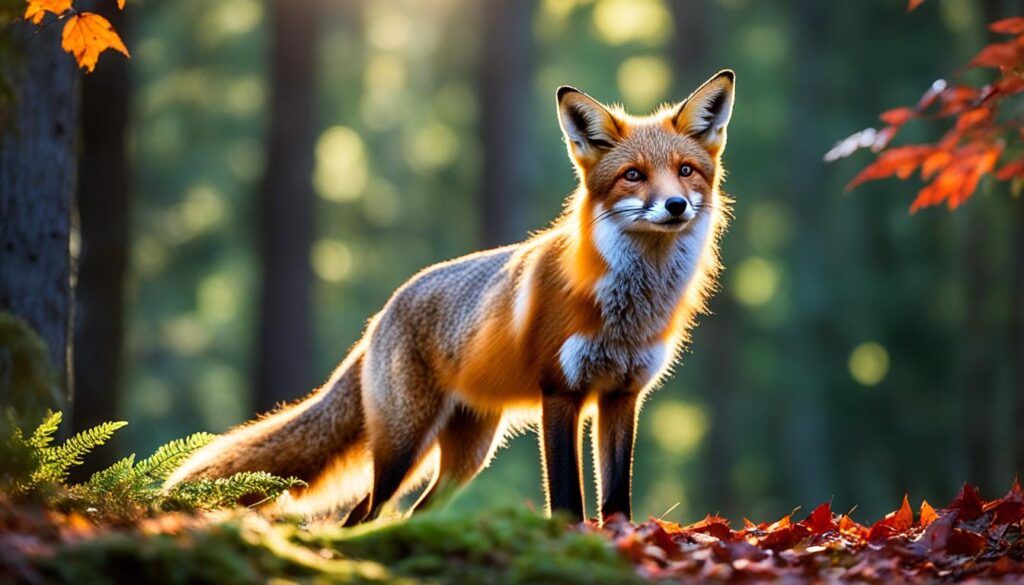
One interesting fact about foxes is their diverse range of vocalizations. They can make more than 40 different sounds to communicate various messages. These vocalizations include barks, screams, howls, and even purrs. It’s their way of expressing themselves and establishing their territory.
But what makes foxes truly captivating are their hunting techniques. They have excellent hearing and can pinpoint the exact location of their prey, even if it’s hidden beneath thick vegetation or snow. With their incredible agility, they swiftly pounce on their unsuspecting victims.
Foxes are intelligent animals that have adapted well to urban environments as well. They are skilled at scavenging for food and have been known to raid trash cans or even steal pet food. Their adaptability and resourcefulness make them highly successful in surviving in diverse habitats.
Some interesting facts about foxes include:
- Foxes belong to the Canidae family, which also includes wolves, dogs, and coyotes.
- They have a keen sense of smell, allowing them to detect prey from long distances.
- Foxes are excellent jumpers and can clear fences or obstacles up to 6 feet high.
- They are solitary animals, except during the mating season.
- Foxes have a bushy tail that helps them with balance and also serves as a warm cover during cold winter months.
| Common Name | Scientific Name | Habitat |
|---|---|---|
| Fennec Fox | Vulpes zerda | Deserts of North Africa |
| Red Fox | Vulpes vulpes | Various habitats including forests, grasslands, and urban areas |
| Arctic Fox | Vulpes lagopus | Arctic regions |
From their vocalizations to their remarkable hunting abilities, foxes are truly intriguing creatures. Their presence in forests adds to the richness and diversity of the natural world. Whether you spot a cunning red fox or an adorable fennec fox, you can’t help but be captivated by their beauty and charm.
Fire Salamander
Fire Salamanders are fascinating creatures known for their vibrant coloration, which serves as a warning to predators about the poison in their skin. These amphibians display bold patterns of bright yellow or orange contrasted with black, making them visually striking.
One interesting fact about fire salamanders is their long lifespan. In the wild, they can live up to 12 years, while in captivity, they have been known to survive for over 20 years. This remarkable longevity allows them to adapt and thrive in various habitats.
Another intriguing behavior exhibited by fire salamanders is their unique habit of shedding their old skin and consuming it. As they grow, they shed their skin, and instead of leaving it behind, they actively eat it. This behavior is believed to provide them with valuable nutrients and help maintain their overall health.
Overall, fire salamanders are captivating creatures with their striking coloration, long lifespan, and unusual skin-shedding behavior. They continue to inspire curiosity and fascination among nature enthusiasts and serve as a reminder of the diverse and remarkable species that inhabit our planet.
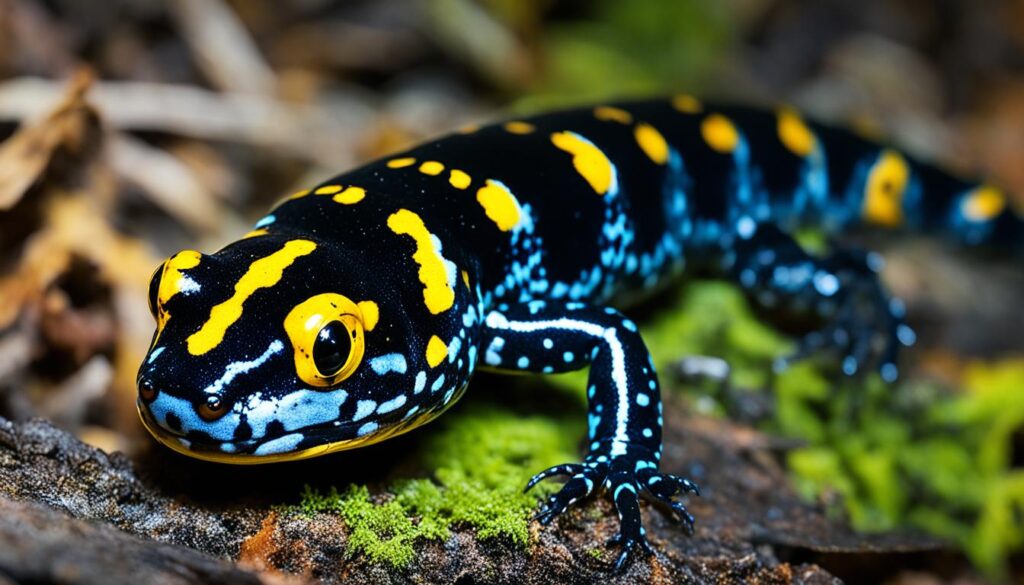
Interesting Facts about Fire Salamanders:
- Fire salamanders have a unique method of reproduction called internal fertilization.
- They are active at night and prefer to live in damp environments, such as forests or near streams.
- These amphibians have the ability to regenerate lost body parts, including tails and limbs.
- Fire salamanders mainly feed on insects, worms, and small invertebrates.
- They are found in various regions of Europe, including countries like Germany, Belgium, France, and the Netherlands.
Flying Fox
Flying Foxes, also known as fruit bats, are fascinating creatures closely related to bats. They can be found in tropical and subtropical areas, such as bushes and mangrove forests. These majestic creatures have a wingspan of up to three feet, making them the largest bats in the world.
Interesting Facts about Flying Foxes:
- Flying Foxes are herbivores and primarily feed on fruits, nectar, and flowers. They play an essential role in pollination and seed dispersal.
- Their name “Flying Fox” comes from their fox-like facial features and their ability to fly.
- Their wings are not made of feathers but are actually skin stretched between their elongated fingers. This gives them the ability to glide through the air.
- These nocturnal creatures have excellent eyesight and a keen sense of smell, allowing them to navigate and locate food efficiently.
- Flying Foxes are social animals and often roost in large colonies, sometimes consisting of thousands of individuals.
- They are known for their unique sleeping habits, as they hang upside down from tree branches, using their claws to grip tightly.
“Flying foxes are essential pollinators and vital for maintaining the ecological balance in tropical and subtropical ecosystems.” – Wildlife Conservation Society
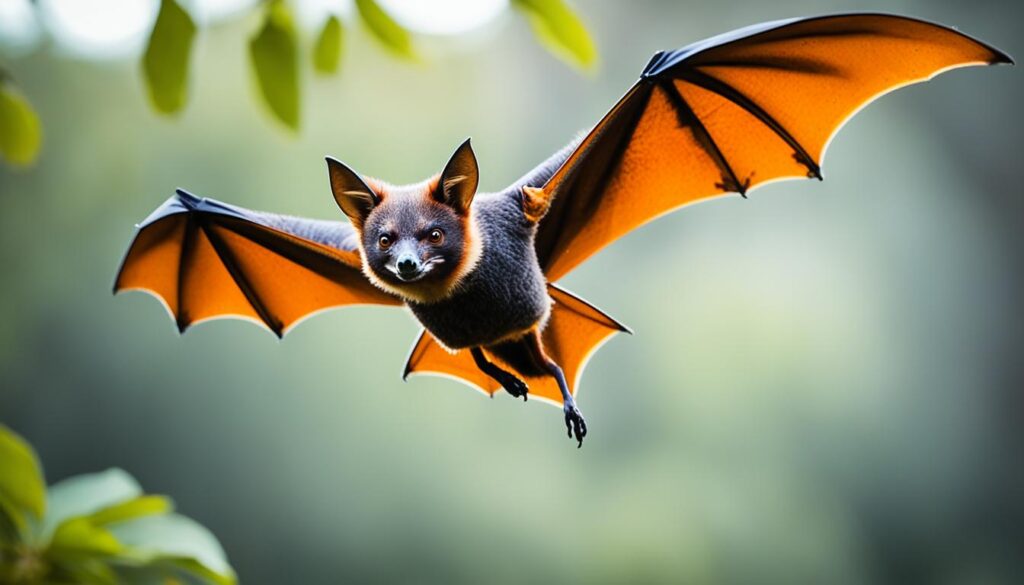
| Flying Fox | |
|---|---|
| Habitat | Tropical and subtropical areas |
| Diet | Fruits, nectar, flowers |
| Wingspan | Up to three feet |
| Unique Feature | Wings made of skin stretched between elongated fingers |
Flying Foxes are a vital part of the ecosystem, playing a crucial role in seed dispersal and helping to maintain the balance of tropical and subtropical habitats. Their unique anatomical adaptations and social behaviors make them truly remarkable creatures.
Flying Fish
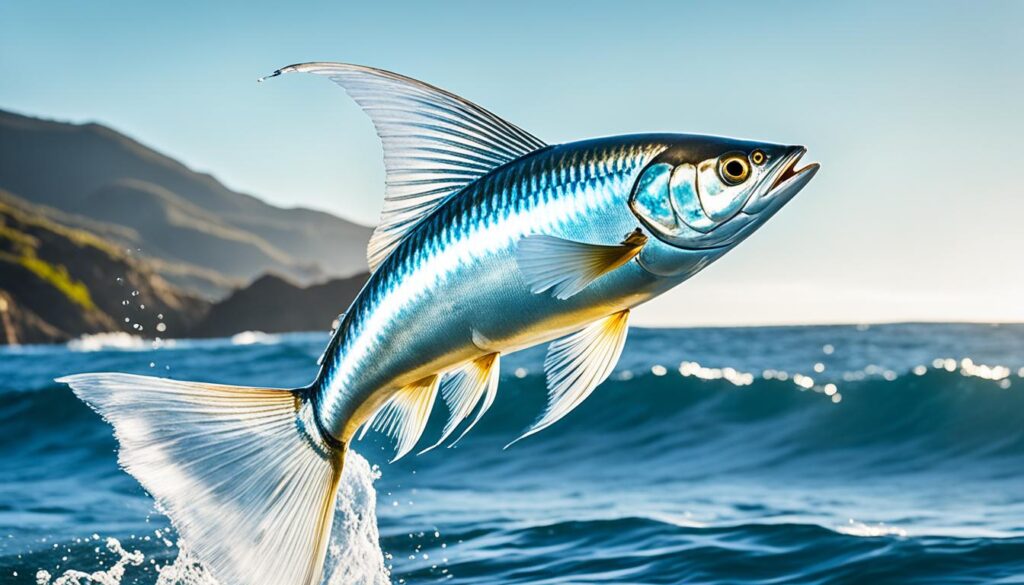
Flying Fish have pectoral fins that are modified to serve as wings. They possess a unique ability to leap out of the water and glide for more than 650 feet.
These remarkable creatures use their powerful tails to propel themselves out of the water’s surface, and once in the air, they spread their horizontal pectoral fins to catch the wind and enable themselves to “fly” above the water’s surface.
They are not true flyers but gliders, using their fins to glide through the air.
During the flight or glide, their striking physical adaptations allow them to travel impressive distances. The elongated shape of their bodies, combined with their streamlined scales and powerful fin strokes, enables them to maintain stability and control while airborne.
| Flying Fish | Interesting Facts |
|---|---|
| Pectoral fins | Modified as wings for gliding |
| Leaping ability | Can leap out of the water and glide for over 650 ft |
| Physical adaptations | Streamlined body shape and powerful fin strokes for stability |
Fun fact: Flying fish showcase their incredible gliding skills to escape from predators and to cover long distances in search of food or suitable habitats.
Flying Squirrel
Flying Squirrels, also known as sugar gliders, are fascinating creatures with fur and big eyes. They are primarily found in Asia, with 90% of all flying squirrel species existing only in this region.
These small mammals are equipped with a unique adaptation that allows them to glide through the air. They have a thin membrane of skin called a patagium that stretches between their limbs, enabling them to glide effortlessly between trees.
One interesting fact about flying squirrels is that they are nocturnal, meaning they are most active during the night. This helps them stay hidden from predators and search for food without much competition.
Another intriguing feature of flying squirrels is their ability to consume nectar and tree sap. They have a specialized diet that includes not only fruits and nuts but also the sweet sap found in tree trunks.

“Flying squirrels are remarkable creatures that have adapted to their environment in unique ways. Their gliding abilities and nocturnal lifestyle make them intriguing subjects of study in the animal kingdom.”
Fire Ant
The fire ant, scientifically known as Solenopsis invicta, is a species of ant that is slightly larger compared to other ants, with a length of up to 33 mm. These reddish-brown ants are known for their aggressive behavior and painful bites, which can cause burning sensations and blisters on the skin.
One of the most interesting facts about fire ants is their remarkable strength. Despite their small size, fire ants are incredibly strong and can lift up to 20 times their own body weight. This impressive strength allows them to carry objects that are much bigger and heavier than themselves.
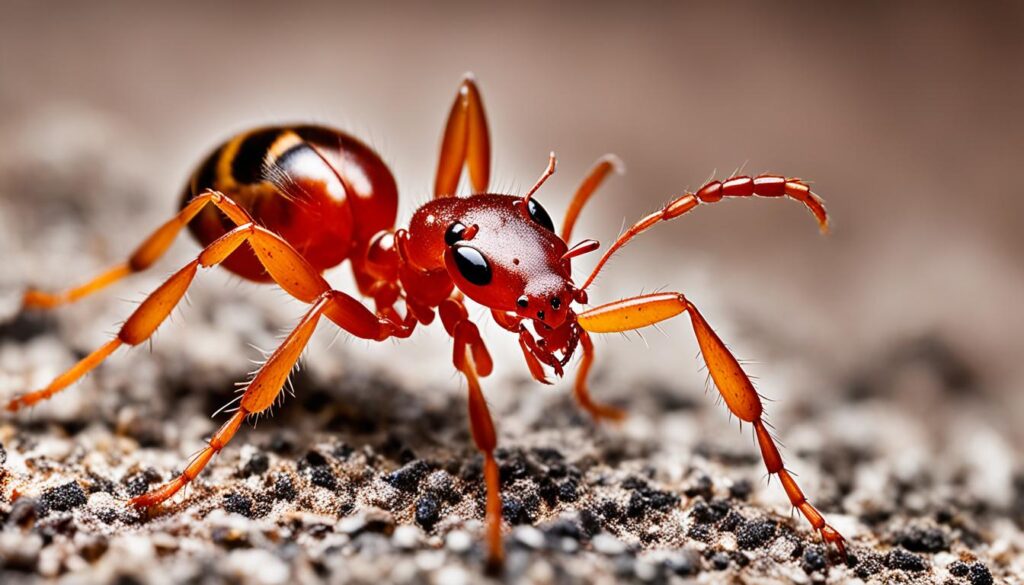
| Fire Ant Facts | Description |
|---|---|
| Habitat | Fire ants are commonly found in warm climates, particularly in the southern regions of the United States. |
| Colonies | These ants live in large colonies that can consist of hundreds of thousands of individuals. The colonies are organized in a hierarchical structure, with each ant having a specific role. |
| Feeding | Fire ants are omnivorous and feed on a variety of food sources, including small insects, seeds, fruits, and even dead animals. |
| Sting | When threatened, fire ants use their stingers to inject venom into their enemies, causing a burning sensation and potentially dangerous allergic reactions in some individuals. |
| Adaptations | Fire ants have adapted to tolerate harsh environmental conditions, including flooding and extreme temperatures, by forming rafts or underground chambers. |
Despite their aggressive nature, fire ants play an important ecological role. They help control the populations of other insects and contribute to the nutrient cycling in their respective habitats. However, due to their tendency to bite and sting humans, it is important to be cautious when encountering these fascinating creatures.
More Animals Starting With Letter ‘F’
In addition to the common animals mentioned earlier, there are plenty more fascinating creatures whose names start with the letter ‘F’. Let’s expand our animal vocabulary and explore some of these amazing animals:
False Killer Whale
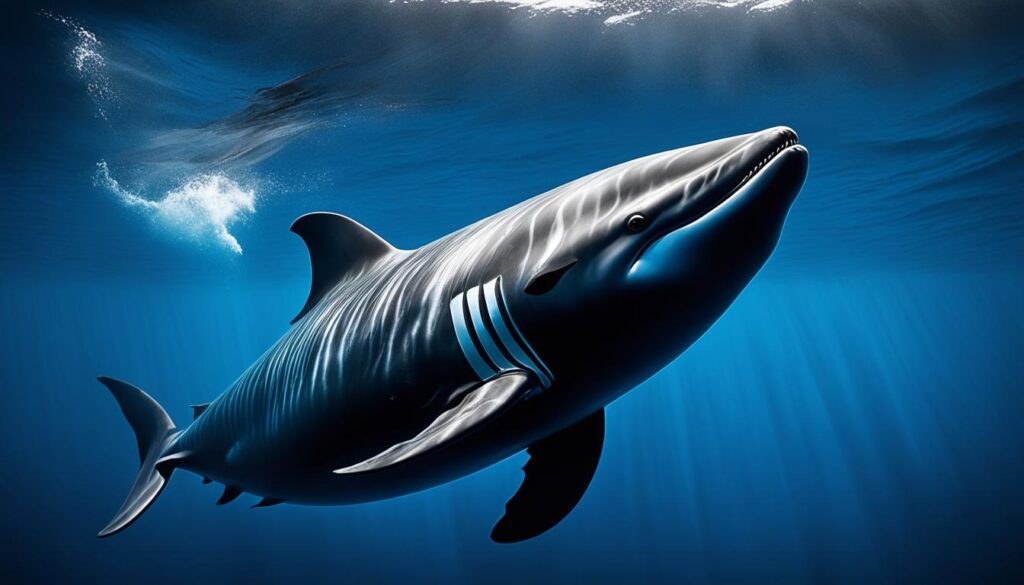
The False Killer Whale is a majestic marine mammal that belongs to the dolphin family. Despite its name, this whale is not closely related to the killer whale. It has a sleek black or dark gray body and can be found in tropical and temperate waters around the world. The False Killer Whale is known for its intelligence and social behavior, often seen swimming in large groups called pods.
Fangtooth
The Fangtooth is a deep-sea fish with a distinctive appearance. It has long, sharp teeth and an elongated body that allows it to navigate the depths of the ocean. Despite its terrifying appearance, the Fangtooth is a small fish, typically reaching lengths of about 6 inches. It resides in the depths of the ocean, where it hunts for prey and adapts to extreme conditions.
Fennec Fox
The Fennec Fox is a small, adorable fox species known for its distinctive large ears. It inhabits the Saharan desert and other arid regions of North Africa. The Fennec Fox has adapted to its environment by developing ears that help dissipate heat and locate prey underground. It is primarily a nocturnal animal, using its exceptional hearing and keen sense of smell to hunt for rodents, insects, and small birds.
Flamingo
The Flamingo is a tall and graceful bird famous for its vibrant pink feathers. These social birds are found in various parts of the world, including Africa, the Americas, Asia, and Europe. Their long legs and large, curved beaks are well-suited for wading in shallow waters to search for food. Flamingos often gather in large flocks, creating breathtaking displays of color and grace.
“The more you learn about animals, the more you appreciate the diversity and wonders of the natural world.”
With these additional animals starting with the letter ‘F’, our animal vocabulary has expanded even further. These creatures highlight the incredible variety of life on Earth and remind us of the beauty and complexity of nature.
Conclusion
In summary, our exploration of animals that start with F has revealed a captivating array of creatures that demonstrate the remarkable diversity of the animal kingdom. From the adorable ferrets and foxes to the majestic fin whales and fur seals, these animals have piqued our curiosity and deepened our appreciation for the wonders of nature.
By delving into the world of these fascinating creatures, we not only expand our knowledge but also develop a stronger connection with the natural world around us. Each animal has its unique characteristics and adaptations, showcasing the incredible variety that exists in our ecosystem.
So, let us continue our journey of exploration and discovery, uncovering more about the fascinating animals that inhabit our planet. Through education and awareness, we can work towards preserving and protecting these incredible creatures for generations to come.
